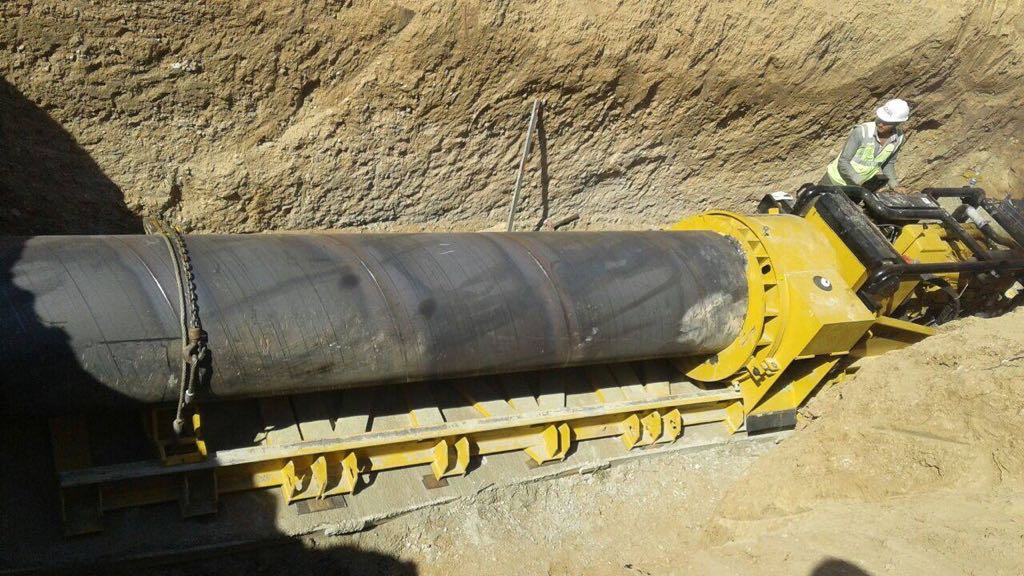
Boring method is the process of sliding steel pipes between the diameters of 300 mm and 1600 mm by means of a horizontal drill. With this method, all kinds of motorways, roads and railways passes are achieved.
SYSTEM PROCEDURE
With the determination of entry points and performing necessary topographic measurements and field works along the line, a crossing line is created. Obstacles that may occur during the shaft and tunnel excavation (existing infrastructures, water, telecommunication, sewerage, electric power transmission networks) are controlled and the necessary elevations are determined and the crossing elevation is determined.
After earth-moving of the shaft place, molds are installed, reinforcements are prepared, back concrete and base concrete are poured according to thedimensions of the machine to be utilized, dimension of pipe diameter and at the dimensions of crossing elevation prepared for the project (approximately 12.00 m in length and 4.00 m in width). If necessary, side shear walls are built. Curtain walls do not contribute to horizontal drilling, unless there is a risk to work safety. Machine Machine travel rails are lowered into the chimney with suitable crane and placed on the base concrete. The travel rails are adjusted according to the drilling axis. The center axis of the rail works with the drilling axis.
Appropriate Appropriate helix is placed inside steel pipe with 6 m in length with adequate thickness (minimum 1% of the diameter, at least 12 mm thickness for a 1000 mm pipe). The pipe is safely lifted and lowered into the chimney by the crane, determining the balance point with helix. The connection socket of the helix is inserted into the machine’s slewing slot. Fixing pin and cotter pin are attached. After the helix is connected to the machine, the pipe to be driven is based on the machine’s pusher buffer. The end of the pipe is driven to the starting starting point of drilling using the pushing mechanism of the machine and drilling bit is placed at the starting point. The drilling process is started.
After the helix has gone to its end, the rotation is stopped. The machine is retracted to the length of the pipe and the other pipe, which has a helix in it, is lowered. The process continues until the end of the line. During this period, the direction and training checks are made by entering the pipe in certain intervals and the line is completed
